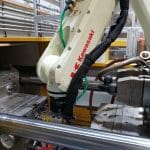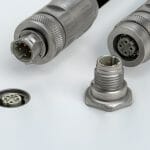The devastating water incident in Flint Michigan, the California water crisis, and unforeseen events like hurricanes Sandy and Matthew increasing the wastewater/sewage population in NJ and NC, highlight key issues within the water and wastewater industry. Though these complications lay in the lack of Renewal & Replacement (R&R) of aging water and wastewater infrastructure and the poor financing for capital improvements, it is unplanned downtime that remains a significant issue within the water industry. The failure of SCADA control causes multiple issues, such as:
An inability to control remote locations
Loss in integration with reliability systems
Loss of data/report generation
“Blindness” from the plant level to the entire district
However, updating aging control systems can yield quick returns and prepares for future applications.
The challenges with traditional supervisory and control assets lay in hardware, antiquated/outdated operating systems & software, and personnel. The traditional hardware typically has multiple single points of failure, with the failure rate and supporting costs increasing exponentially after five to seven years. Antiquated/outdated operating systems & software usually contain cyber-security vulnerabilities, are subject to extended downtime and are difficult and expensive to upgrade. Personnel challenges include institutional knowledge held by an aging infrastructure.
The solution to these challenges lies in virtualisation – which is a key component for L2/L3 modernisation. Implementing virtualisation technology to run on SCADA systems reduces the number of hardware platforms holding multiple applications. In addition, it provides cost-saving benefits, operational improvements, and increased productivity.
However, though virtualisation is widely accepted in the IT world, OT personnel within the automation space are not as quick to adopt. This is because, with a traditional architecture, hardware failure in virtualised systems is catastrophic.
Single physical machine = Potential single point of failure
So how can this be prevented? There are many services that protect virtualised systems, however, Stratus provides solutions that are continuously available, operationally simple, and cost-effective. Stratus’s ftServer offers an automated uptime layer and fault detection isolation. Both layers of the platform run in absolute lockstep – still working seamlessly if one layer were to fail – with no data loss. Stratus also offers 24/7 service support which includes in-depth system health monitoring, dedicated availability experts, and system monitoring and diagnostics and more.
When it comes to modernising a SCADA infrastructure, start with developing a modernisation plan along with modernising existing assets. Next, develop and implement an IIoT plan for the future.
To learn more about how to platforms running SCADA systems can dramatically improve overall performance, watch John Fryer, Senior Director, Industry Solutions at Stratus, and Logic Inc.’s webinar.




